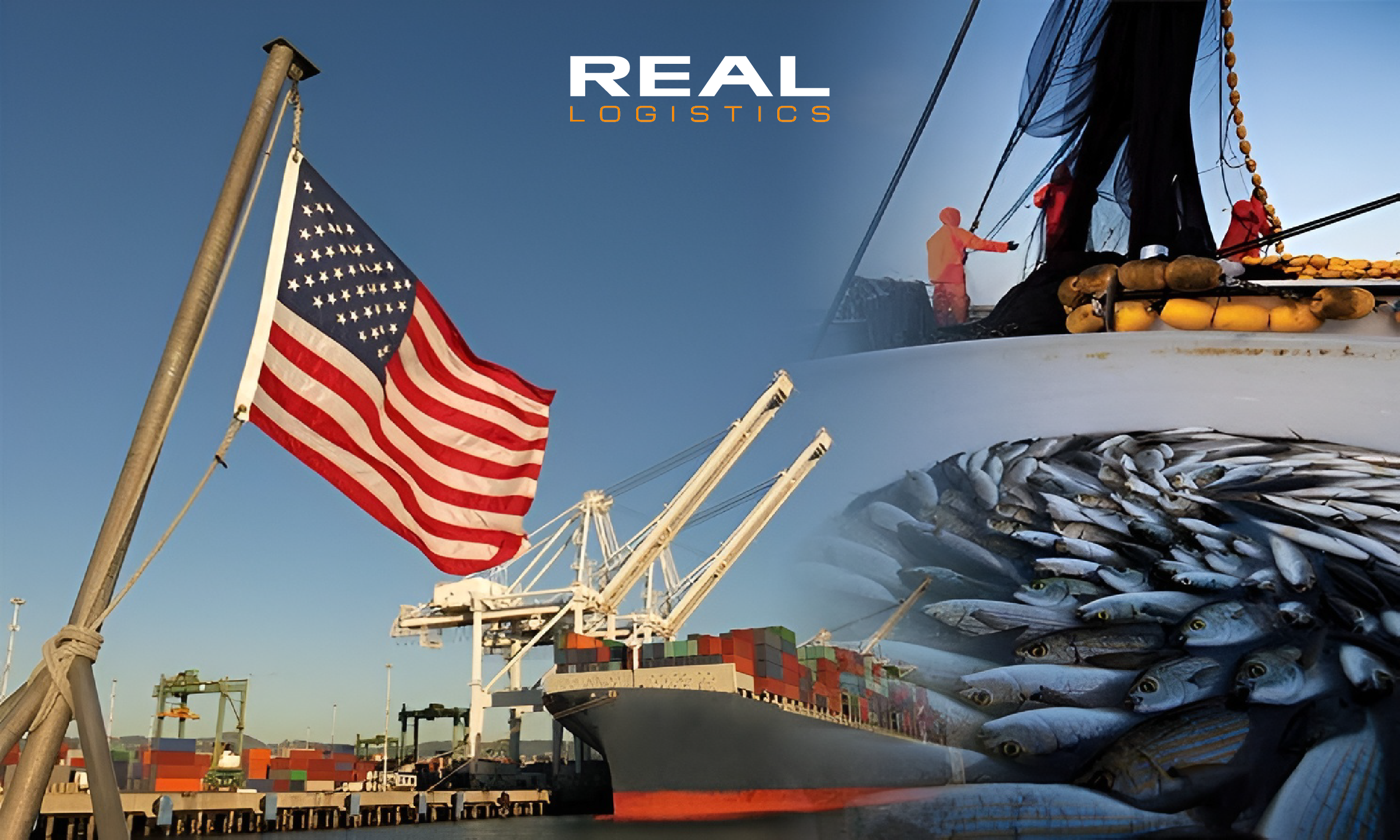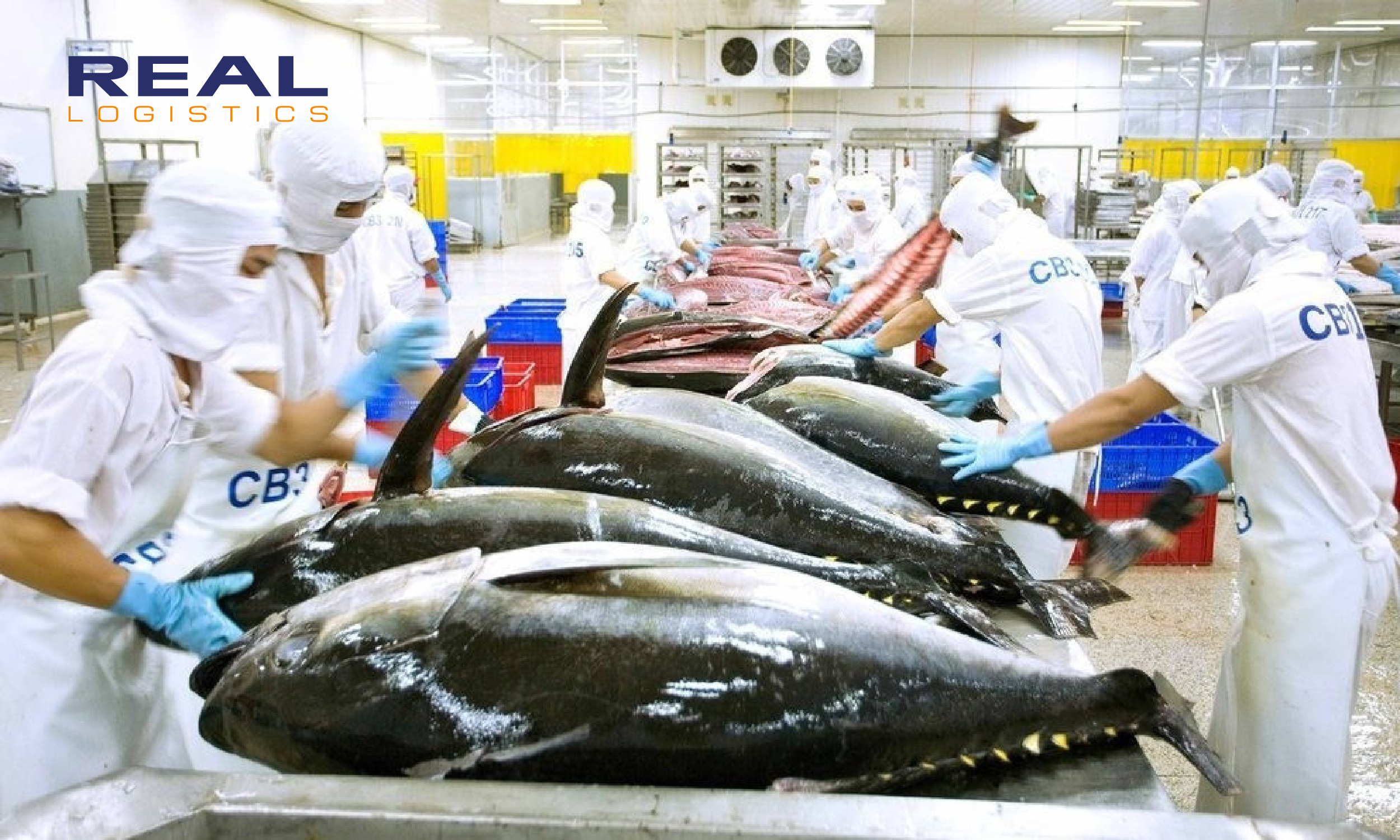U.S. Ban on Certain Vietnamese Seafood from January 1, 2026: Detailed Explanation of the MMPA Rules, Affected Products and Urgent Guidance
1. Overview: Why Is the U.S. Banning Certain Seafood Products from January 1, 2026?
On August 29, 2025, NOAA Fisheries announced its final comparability findings under the Marine Mammal Protection Act (MMPA). This program requires all countries exporting seafood to the U.S. to meet protection standards for marine mammals equivalent to those applied to U.S. commercial fisheries, particularly in terms of:
- Reducing bycatch of dolphins, whales, and other marine mammals
- Transparent, monitored fishery management
- Prohibiting intentional mortality or serious injury of marine mammals
- Providing complete and reliable data reporting
The U.S. has announced that from January 1, 2026, it will prohibit imports of seafood products harvested by any “fisheries” that NOAA has denied comparability findings.

Important note: The U.S. is not banning all Vietnamese seafood. The ban only applies to products harvested by 12 specific Vietnamese fisheries that did not meet MMPA standards.
2. Vietnam Is in the “Partially Denied” Group – 12 Fisheries Banned from January 1, 2026
NOAA categorizes harvesting nations into three groups:
- Nations granted comparability findings for all fisheries
- Nations denied for all fisheries
- Nations denied for a subset of their fisheries
Vietnam falls into the third category: denied for a subset of its fisheries.
2.1. List of 12 Vietnamese fisheries denied MMPA comparability (banned from January 1, 2026)
(Extracted from NOAA’s final comparability findings – Vietnam fishery codes)
- Fishery 2932 – Grouper caught with gillnets and bottom trawls
- Fishery 2988 – Crab and other crustaceans caught with gillnets, trawls, pots/traps
- Fishery 2990 – Cuttlefish, mullet, flatfish, grouper, etc. caught with gillnets and handlines/longlines
- Fishery 2991 – Round scad (Decapterus spp.) caught with gillnets and handlines
- Fishery 2992 – Lobster caught with bottom-set gillnets
- Fishery 2994 – Mackerel caught with gillnets and purse seines
- Fishery 3051 – Mackerel caught with gillnets and purse seines
- Fishery 3052 – Mullet caught with bottom-set gillnets
- Fishery 3054 – Mackerel caught with mid-water gillnets
- Fishery 3057 – Small pelagics and tuna caught with gillnets
- Fishery 13124 – Tuna caught with mid-water gillnets and purse seines
- Fishery 13125 – Billfish/swordfish caught with mid-water gillnets and handlines
2.2. Seafood product groups directly affected
The following product groups are directly impacted:
- Tuna: skipjack, bigeye, yellowfin, etc.
- Swordfish, billfish/marlins
- Grouper
- Mackerel
- Mullet
- Crab (including swimming crab)
- Squid and cuttlefish
- Plus some other small pelagic and demersal species

This is why many market summaries simply state that the U.S. will “ban tuna, squid, crab, etc. from Vietnam”.
3. Why Were These Vietnamese Fisheries Denied? (According to NOAA)
NOAA concluded that the denied fisheries failed to meet U.S. standards for several key reasons:
- High bycatch risk for whales and dolphins
- Lack of mandatory monitoring systems (observers, cameras/VMS, port sampling)
- Inability to demonstrate effective bycatch mitigation at levels comparable to U.S. fisheries
- Insufficient data on interactions with marine mammals
- Some fisheries have no explicit prohibition on intentional injury or killing of marine mammals
This is why, under the MMPA, Vietnam must upgrade its fisheries management system to be reconsidered in future comparability reviews.
4. Impact Assessment: How Much Does Vietnam’s Seafood Sector Stand to Lose?
Based on estimates from VASEP, the Ministry of Industry and Trade, and NOAA data:
- Around USD 512 million per year in export value is directly affected
- This represents 28–30% of Vietnam’s total seafood exports to the U.S.
The most heavily affected product lines include:
- Oceanic tuna: approximately USD 387 million
- Crab/swimming crab: around USD 80 million
- Squid and cuttlefish: roughly USD 15–20 million
- More than 200,000–300,000 workers across the harvesting and processing chain are impacted
- Fishers in provinces such as Bình Định, Phú Yên, Khánh Hòa and Kiên Giang are expected to see income reductions of 30–50%
This is widely considered the most severe external shock to Vietnam’s marine capture sector since the EU “yellow card” on IUU fishing.
5. How Exactly Will the Ban Work from January 1, 2026? It’s Not “All Tuna Is Banned”
NOAA’s ban is fishery-based, meaning it is applied according to a combination of:
- Species (FAO 3-alpha code)
- Gear type used
- Fishing area (FAO area)
- HS/HTS codes used at import
- Harvesting nation
Therefore: Not all Vietnamese tuna will be banned.
Only tuna/squid/crab and other species harvested by the 12 non-compliant fisheries will be prohibited.
Other products can still be imported into the U.S. if they meet certain conditions:
- They come from aquaculture
- They are harvested by Vietnamese fisheries that received comparability findings (e.g. certain handline/rod-and-reel tuna fisheries such as Fishery 3053)
- Or their clean origin is documented through a Certificate of Admissibility (COA)
6. Certificate of Admissibility (COA): A Mandatory Condition to Maintain Market Access
NOAA and U.S. Customs and Border Protection (CBP) have identified a list of HTS codes that are “COA-flagged.”
If a shipment is declared under a flagged HTS code, two scenarios are possible:
- It is outright prohibited if NOAA/CBP determine it clearly belongs to a denied fishery
It may be admitted if the importer submits a COA demonstrating that the product:
- Was harvested using compliant methods
- Employed acceptable gear types
- Came from approved fishing areas
- Belongs to a fishery that is not among the 12 banned fisheries
The COA must be filed by the U.S. Importer of Record through CBP’s Automated Commercial Environment (ACE).
7. Why Are Exporters “Rushing ETA before December 31”? Is That Legally Correct?
Many exporters are trying to ship as much as possible before December 31, 2025 to avoid the ban.
However, it is important to understand the legal trigger:
- The law states that import prohibitions and COA requirements apply from January 1, 2026
- CBP enforces the rules based on the entry date, not just the vessel’s ETA
This means: If a vessel arrives in the U.S. before January 1 but the entry is filed after January 1, the shipment may still be subject to the ban or COA requirements.
The safest approach is: Ship early, and aim to complete customs entry before January 1, 2026 – or prepare a robust COA package in advance.
8. What Should Vietnamese Exporters Do Now?
As a U.S. trade-lane freight forwarder with extensive experience in seafood and frozen cargo, Real Logistics recommends that exporters take the following actions:
8.1. Verify the origin and fishery of your raw material
- If your raw material comes from one of the 12 denied fisheries → it is almost certain to be banned from January 1, 2026
- If it comes from approved fisheries → start preparing COA documentation immediately
8.2. Engage with your U.S. importer and customs broker now
- Confirm whether your planned HTS codes are COA-flagged
Prepare a complete COA dossier and traceability documents, including:
- Fishing vessel details
- Gear type
- Fishing area
- Fishery code (where available)
- Landing and processing records
8.3. Plan shipments before December 31, 2025
- Prioritize shipments of tuna, swordfish, crab and squid that are at high risk of being affected
- Optimize sailing schedules, avoid missing cut-off times, and choose reliable services with stable transit times
8.4. Prepare a medium-term strategy
- Consider adjusting raw material sourcing away from high-risk fisheries
- Diversify export markets: EU, Korea, Japan and other high-value destinations
- Work with fishers and suppliers to upgrade fishing gears and traceability systems to meet MMPA and other sustainability standards
Real Logistics can support exporters by:
- Reviewing HS/HTS codes for U.S. imports
- Cross-checking fishery–gear type combinations against MMPA risk
- Advising on shipping timelines and COA documentation strategy
- Designing year-end shipping plans to the U.S. for late 2025
9. Conclusion: A Critical Turning Point for Vietnam’s Seafood Industry
The 2026 MMPA-driven ban is a major challenge, but it also creates an opportunity to:
- Upgrade fisheries management
- Strengthen traceability systems
- Increase the long-term value and resilience of Vietnam’s seafood exports
Exporters have very limited time before January 1, 2026 to:
- Accelerate shipments
- Complete customs formalities
- Prepare COA documentation
- Adjust their market and sourcing strategies
Real Logistics is ready to stand alongside Vietnamese exporters during this critical transition period and help them navigate the new U.S. regulatory landscape.
—————————————
Real Logistics Co.,Ltd
👉 Facebook: Real Logistics Co.,Ltd
☎️ Hotline: 028.3636.3888 | 0936.386.352
📩 Email: info@reallogistics.vn | han@reallogistics.vn
🏡 Address: 39 - 41, B4 Street, An Khanh Ward, Ho Chi Minh
G2 Floor, No. 51, Quan Nhan Street, Thanh Xuan Ward, Hanoi

